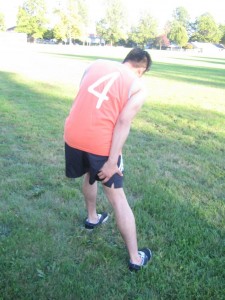Foot drop is a symptom, not a condition. It is described as the inability to raise the foot upwards as if pulling the toes up towards the shin. An individual with foot drop might drag the foot along the floor while walking. As a way to combat this, the individual might raise the hip and knee higher so that the foot clears the ground. In some cases, the foot is slapped back to the floor once the heel strikes the ground since the downward motion could not be controlled.
Causes
Foot drop can be a temporary condition or even permanent, depending on the cause. There are various causes which includes the following:
- Injury to the peroneal nerve
- Spinal canal stenosis
- Injury to the ankle dorsiflexor muscles
- Compartment syndrome
- Peripheral neuropathies
- Muscular conditions such as muscular dystrophy
- After a stroke
- Neurodegenerative conditions such as multiple sclerosis
- Diabetes
- Motor neuron disorders such as polio
- Habitual crossing of the legs when sitting since this compresses the peroneal nerve
- After surgery such as knee replacement that can be due to a hematoma that causes compression or irritation of the nerve which is temporary or from nerve damage during surgery.

Diagnosing foot drop
It is vital to establish the exact cause of foot drop. In some circumstances, it will be apparent and in others, it will be more complicated. If the individual has foot drop, a doctor should be consulted who will assess the injury and medical history for possible causes. If the exact cause is not clear, diagnostic tests such as a CT scan, MRI, EMG or blood tests are required in order to detect conditions such as diabetes.
Treatment
The management of foot drop tends to vary depending on the exact cause of the issue and if it is transitory or long-lasting.
Bracing and splinting
A foot drop splint is often the initial line of treatment. This will help hold the foot up off the ground so that walking will be easier. These are usually made out of plastic that are inserted into the shoe. If you want to learn more about splints, read here.
Non-surgical treatments
Physical therapy can be utilized in order to restore the gait cycle of the individual. This can be used in treating the underlying cause of foot drop. Nerve stimulation might be effective among those who ended up with foot drop due to a stroke. In some cases, a battery-operated unit is strapped to the leg right below the knee or a small-sized stimulator is implanted inside the leg. The treatment for other causes of foot drop includes steroid injections and anti-inflammatory medications.
Surgical treatment
Surgery might be required in some individuals if the non-surgical treatments failed. The surgery will vary depending on the exact cause of the foot drop. It might be aimed at the cause such as with spinal stenosis or other back issues or can be used in order to fuse the ankle joint in order to prevent the downward drop.
